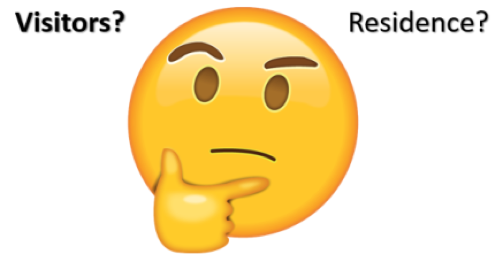
Figure 1. Encompasses the uncertainty of what a digital visitor and resident is
The terms digital natives and immigrants were originally coined by Prensky (2001) which were used to explain disparities within digital engagement. Successively, this concept suggests that people who have grown up in the digital revolution (digital natives) are more familiar with digital technology and consequently use it more frequently, in comparison to their senior counterparts who struggle to adapt to a vastly evolving digital world (digital immigrants) Prensky (2001).
Notwithstanding, this idea received criticism for its age segregations and was later challenged by research from (White & Le Cornu, 2011) who argued that digital engagement should not be viewed as a binary opposition but rather as a continuum. Subsequently, they refined the terms digital natives and immigrants to digital visitors and residents which aims to reflect this continuum. Consistently, (White et al., 2012) contend that digital immigrants are not automatically less technically adept than the residents. Instead technology usage is dependent on goals, visions and motivations as opposed to background and age.
Additionally, research has found that the main differences between visitors and residents are as follows (White, 2014):
Visitors:

Figure 2. Suggests that visitors have one target when using the internet
- Need to see a benefit of using the platform
- Functional use (coursework, emails)
- Unlikely to have any persistent online profile and usually do not want a digital identity
- 6 hours spent online on average per week
- Prefer personal networks
Residents:

Figure 3. Conceptualises the social presence of the resident
- Merge online presence with reality
- Value online as a source of knowledge and communication
- Significant online presence
- High usage (more than ten hours per week)
- Actively use social media
The following video also highlights this concept in greater detail:
http://www.youtube.com/watch?v=MSK1Iw1Xtw
Furthermore, in my personal life, I tend to shy away from online communication. This is because I prefer personal interactions despite having grown up in the digital age, which anecdotally disproves Prensky’s theory. However, to say that I am completely digitally unskilled would also be reductive. As (White et al., 2011) rightfully suggests, my digital presence varies depending on context for example, university requires a high level of online research and sophisticated internet use; since this is intended for a specific purpose here I am a digital visitor. However, in alternative circumstances I do exploit online networks to maintain social ties especially long distance friendships which have arisen because of university. Additionally, I share my opinions online through platforms such as blogging thus here I am a digital resident. Therefore, I belong in the middle of this spectrum.

Digital Visitors ME Digital Residents
Figure 4. Illustrates the continuum of digital engagement with my personal rating on this scale.
For further reading, be sure to check out: http://daveowhite.com/vandr/
References
Dave White (2013) Just the mapping. Available at: https://www.youtube.com/watch?v=MSK1Iw1XtwQ (Accessed: 10 February 2017).
Prensky, M. (2001a) ‘Digital natives, digital immigrants part 1’, On the Horizon, 9(5), pp. 1–6. doi: 10.1108/10748120110424816.
Prensky, M. (2001b) ‘Digital natives, digital immigrants part 2: Do they really think differently?’, On the Horizon, 9(6), pp. 1–6. doi: 10.1108/10748120110424843.
White, D. (2014) Visitors & residents. Available at: http://daveowhite.com/vandr/ (Accessed: 10 February 2017).
White, D., Le Cornu, A., Hood, E., Lanclos, D. and Silipigni, L. (2012) Digital residents and visitors progress report.
White, D.S. and Le Cornu, A. (2011) ‘Visitors and residents: A new typology for online engagement’, First Monday, 16(9). doi: 10.5210/fm.v16i9.3171.
Image references
Figure 1. Photcredit: ZinCheong via WordPress
Figure 2. Photo credit: Nerthuz via shuttershock
Figure 3. Photo credit: Magicatwork via Flickr
Figure 4. Self-produced

It’s quite interesting how you place yourself in the middle, between a digital resident and digital visitor. It’s understandable that in certain aspects it could be possible to vary between the two, however do you think it’s entirely possible to be both at once?
While I agree that in some aspects I myself am a digital visitor, in that I use Google to search for things that I am unfamiliar with, I wouldn’t really consider myself a “visitor”. If you take White’s example of the garden shed vs the park/building, is it not possible to be a “resident” who occasionally needs to use their tools from the shed? I see myself in that way; I consider myself a “resident” who fully embraces the Internet and the online identities and communities, however I will still use the web as a tool occasionally.
Do you think it’s possible to be in-between the two then, rather than fully embracing one or the other?
LikeLike
Hi Andy,
Thank you so very much for taking the time to comment on my post, I love the analogy you used by White of the garden shed vs the park/building. To answer your question, I agree that on different activities this scale will vary but if we are to speak in general terms then yes I do think that you can be between both as opposed to fully embracing one or the other; that is the beauty of a continuum as opposed to two distinct categories. Following this, I think that if we adopted the idea of being singly a digital resident or a digital visitor this model is destined for failure because as you rightfully suggest there will inevitably be cases where an individual is mostly one but still fits into subthemes of the other, which then implies that the person is both even if the scale is not completely equal. Additionally, as digital engagement is dependent on context most people are likely to be in the middle hence why I rated myself here. Nonetheless, in psychological research, it has been found that there is a single “g” factor for intelligence which also varies along a continuum suggesting that the higher you are on this scale the more intelligence you have on array of different things. Therefore, I am sure that a “g” factor to digital engagement can also apply where some people are wonderfully well-versed in all contexts and others are completely adept. But, yes for the wider popular I do think most people are in between.
I really do hope this answers your question
Raziya
LikeLike
Hi Raziya,
The reflection upon personal experience was insightful, foregrounding uncertainty using the visitor-resident continuum. I can sympathise from personal experience with the difficulty adjudging where my Facebook behaviour fits in the V&R continuum. The posts structural approach foregrounds previous research adjudging Web behaviour: the figures and explanations textually and visually demonstrated the topic well, walking us through Prensky, White and Le Cornu and other colleagues.
However, I’m not sure the Visitor-Resident continuum was intended to map and adjudge people holistically, as the fourth figure implies, but intended to map digital Visitor-Resident engagement within specific applications as White’s mapping suggests: http://daveowhite.com/vandr/vr-mapping/. I wondered if you had considered where people sit on that spectrum with regards to different applications, possibly developing this further by drawing specific application behaviours upon Figure 4: perhaps elaborating on the “g” factor discussed in reply to Andy might further shed light on this?
Cheers,
Wil
LikeLike
Hi Wil,
Thank you for your comment and kind words. I do understand that the continuum was not intended to map people holistically hence I mentioned my position in different contexts but, I used that as a general example. I’m not sure I quite understand your question; I believe that where people sit on the spectrum with regards to different applications is entirely subjective and dependent on individual context and exposure so I am not sure I can comment. But as for me personally, I would say that I am a visitor for some forms of social media (Twitter and FB) but a resident in others such as YouTube. Additionally, I am also a visitor for academic purposes such as when conducting research or looking through journal databases. In regards to the “G” factor, to put it in layman’s terms this is the idea that you meet some people and they have a wow factor, it appears they are skilled at everything, this is called the General factor to intelligence, I used this example to suggest that in extreme cases some people may have a G factor to digital engagement and be a resident in all applications.
Here is some further reading on the G factor in case you’re interested:
Click to access Inspection-Time-and-g-Letter-1996-by-Arthur-Robert-Jensen.pdf
Raziya
LikeLike
Hi Raziya,
Thank you for your reply,
I recognise the continuum used is a general example, thank you for clarifying this. I wondered if you found the mapping process somewhat insufficient as a tool to holistically capture engagement, as, in my post, I found that the mapping process may not cover enough ‘dimensions’ to map all the facets of engagement on the Web. This was something I wanted to explore further and thank you for facilitating this exploration.
I think, in aim to clarify my question in the previous post, I intended to ask the following:
In the fourth figure you map one person on the V&R spectrum. Would it be possible to map multiple people, perhaps from different generations or digital exposure? I wondered this because the V&R framework very much seems to be a somewhat personal and individual map, rather than considering engagement collectively. I very much agree mapping and modelling engagement behaviour on the spectrum is subjective and individual, I simply wondered if you had any views about how to overlay and capture multiple peoples’ engagement on the spectrum or in other maps.
In the post I produced about this topic, I indicated other ways I thought it might be possible to map and model engagement, and was curious if you had any other ways of mapping and modelling this behaviour? Compared to my experiences mapping collective engagement structures, such as on a Social Graph, https://en.wikipedia.org/wiki/Social_graph as part of Social Network Analysis https://en.wikipedia.org/wiki/Social_network_analysis, which I have used in the past when mapping and modelling users personal relations, to reflect their engagement (usually, in more residential terms, to see who is connected to who on applications like social network), this mapping approach seemed somewhat individual and lack objectivity, hence my questions about whether you also find there are any possible extensions to the mapping.
Thank you for the elaboration on the G factor: I was somewhat familiar with the concept before: I can now see your envisioned application of this concept to someone who engages as a resident across all their applications. I wondered if, for some sources of engagement, like static web pages, if someone could be a resident: is it the application determines how someone engages or a person, or a mixture of both?
I also wonder how much you think factors such as IQ and inspection time, connected to the G factor, could influence ones engagement capacity as resident and visitor.
Many thanks again for your reply,
Cheers,
Wil
LikeLike
Hi Raz,
I enjoyed reading the section about your experiences and how it refutes Prensky’s theory; I agree that the terms are not representative as they only take into account an individual’s age and not their capability. I also liked how you separated digital visitors and residents through using images; the relevant graphics make it clear to understand the terms. I think you could apply this to the first section on digital natives and immigrants to make your blog more consistent, but it still informs the reader well nonetheless.
Additionally, I liked how you placed yourself on the digital resident/visitor continuum and used personal experiences to demonstrate your point. I agree that a person can vary along the continuum, that they are not limited as either a resident or visitor. You have clearly shown this in your blog that it can change depending on context.
Wei
LikeLike
Hey Wei,
Thank you so much, this comment was both encouraging and very helpful.
I shall definitely take what you have said on board.
LikeLike